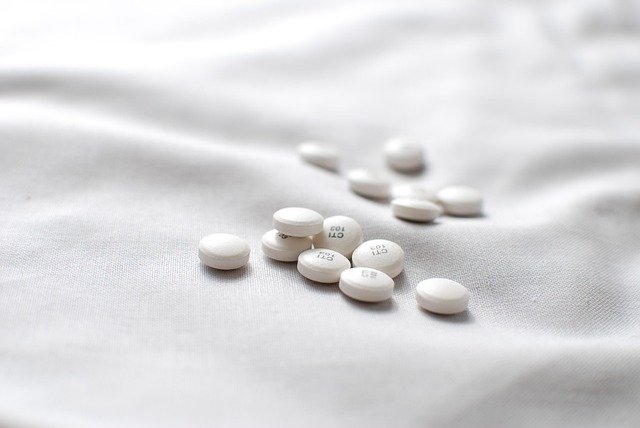Understanding and Managing Tardive Dyskinesia: Effective Treatment Approaches
Tardive dyskinesia (TD) is a neurological disorder characterized by involuntary, repetitive movements that typically affect the face, lips, tongue, and occasionally the limbs. This condition often develops as a side effect of long-term use of certain medications, particularly antipsychotics. While once considered largely irreversible, advances in medical science have expanded treatment options and improved outcomes for those affected. Understanding the causes, risk factors, and available treatments is essential for anyone dealing with TD or supporting someone with this condition.

Understanding Tardive Dyskinesia: Causes & Symptoms
Tardive dyskinesia develops primarily as a result of prolonged exposure to dopamine receptor blocking agents (DRBAs), most commonly antipsychotic medications. These drugs work by blocking dopamine receptors in the brain, which can help manage symptoms of psychiatric disorders like schizophrenia or bipolar disorder. However, this same mechanism can disrupt the normal functioning of the basal ganglia, a region of the brain responsible for coordinating movement.
Common symptoms of TD include grimacing, lip smacking, tongue protrusion, jaw movements, rapid blinking, and involuntary movements of the limbs or torso. These movements can range from mild and barely noticeable to severe and disabling. In some cases, TD can interfere with daily activities such as eating, speaking, and walking, significantly impacting quality of life. Many patients report that symptoms worsen during periods of stress or fatigue and may improve during sleep.
Medications That Trigger Tardive Dyskinesia
Several classes of medications carry the risk of causing tardive dyskinesia, with first-generation (typical) antipsychotics posing the highest risk. Medications like haloperidol (Haldol) and chlorpromazine (Thorazine) have been associated with TD rates of 20-30% after long-term use. Second-generation (atypical) antipsychotics, including risperidone (Risperdal) and olanzapine (Zyprexa), carry a lower but still significant risk, estimated at 5-10% after prolonged treatment.
Other medications that can trigger TD include certain antiemetics (medications for nausea) like metoclopramide (Reglan), prochlorperazine, and promethazine. Some mood stabilizers and tricyclic antidepressants have also been implicated in rare cases. The risk generally increases with higher dosages and longer duration of use, with elderly patients and women appearing to be at higher risk for developing symptoms after medication exposure.
Identifying Your Risk for Tardive Dyskinesia
Several factors can influence an individual’s susceptibility to developing tardive dyskinesia. Age is a significant factor, with older adults being more vulnerable to TD. Studies show that the risk increases by approximately 5% per decade of life when taking antipsychotic medications. Gender also plays a role, with women generally showing higher susceptibility than men, particularly postmenopausal women.
Genetic factors may predispose certain individuals to TD, though specific genetic markers are still being researched. Patients with pre-existing movement disorders, brain injury, or cognitive impairment face elevated risks. Additionally, substance use disorders, particularly alcohol use disorder, may increase vulnerability. Diabetes and certain nutritional deficiencies have also been identified as potential risk factors. Regular screening for early symptoms is crucial for patients taking high-risk medications, especially those with multiple risk factors.
Recognizing Tardive Dyskinesia Symptoms & Diagnosis
Diagnosis of tardive dyskinesia relies primarily on clinical observation and medical history. Physicians typically use standardized rating scales such as the Abnormal Involuntary Movement Scale (AIMS) to assess and track symptoms. This examination involves observing the patient at rest and during voluntary movements, noting any involuntary movements in different body regions. The diagnosis requires that symptoms persist for at least 4-8 weeks and develop during or within weeks of taking dopamine receptor blocking agents.
Early recognition is crucial for optimal management. Initial symptoms may be subtle and easily overlooked, such as minor tongue movements when the mouth is open or mild finger tapping. These symptoms can be distinguished from other movement disorders like Parkinson’s disease or akathisia by their characteristic pattern and relationship to medication use. Neuroimaging studies like MRI or CT scans may be performed to rule out other neurological conditions but cannot definitively diagnose TD.
Effective Treatment Options for Tardive Dyskinesia
The management of tardive dyskinesia has evolved significantly in recent years with the FDA approval of vesicular monoamine transporter 2 (VMAT2) inhibitors. These medications—deutetrabenazine (Austedo) and valbenazine (Ingrezza)—have demonstrated effectiveness in reducing TD symptoms in clinical trials. VMAT2 inhibitors work by regulating dopamine release in the brain, helping to restore normal movement patterns without interfering with the therapeutic effects of psychiatric medications.
For patients who cannot discontinue the causative medication, dose reduction or switching to a lower-risk alternative may help manage symptoms. Antioxidants like vitamin E have shown modest benefits in some studies, though results are inconsistent. Benzodiazepines may provide temporary relief but are not recommended for long-term use due to dependence risks. Deep brain stimulation represents an emerging surgical option for severe, medication-resistant cases, though more research is needed to establish its long-term efficacy.
Non-pharmacological approaches include physical therapy and speech therapy to help patients manage functional impairments. Relaxation techniques and stress management can help reduce symptom severity during exacerbations. Peer support groups provide valuable emotional support for individuals dealing with the psychological impact of TD.
This article is for informational purposes only and should not be considered medical advice. Please consult a qualified healthcare professional for personalized guidance and treatment.




